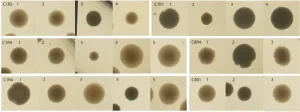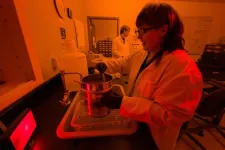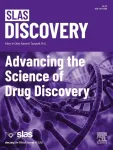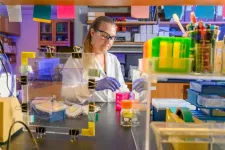(Press-News.org) Microbial communities are widely used biotechnology suppliers for processes like manufacturing biofuels and new foods, or helping crops grow better. To engineer successful communities, scientists need to predict whether microorganisms can live and work together. One popular predictive rule states that if a pair of microbes will coexist, they will also coexist in a bigger community of microbes. A study published in Science now found that this simple rule will not always work.
Just like plants and animals, microorganisms live in complex ecological communities consisting of multiple species that coexist with one another. These communities are found all over the planet, and they also play a growing and highly promising role in biotechnology. Microbial communities are being designed for producing biofuels and other essential products in biorefineries, to create new foods, or to help crops grow better. Thus, learning how to engineer these communities to improve the services they provide is a major goal in biotechnology.
One of the major roadblocks for engineering microbial communities is that not all microorganisms will coexist with one another. Even if we manage to design a microbial community with high potential, it is very likely that many of its members will go extinct. This is why scientists are trying to find ways to predict whether species will coexist with one another.
“We are trying to understand the stunning diversity that we see in bacterial communities. How can that many species manage to coexist within the same community?” - Djordje Bajić, Assistant Professor in Industrial Microbiology / Delft University of Technology
A simple rule
Researchers from University of Pennsylvania, Centro Nacional de Biotecnología of the Spanish National Research Council, Delft University of Technology and Yale University studied how to predict bacterial coexistence in complex communities. In this paper by Chang et al, the authors have examined a popular hypothesis: That in order for multiple species (say A, B and C) to coexist as a community, every pair of species must also coexist with one another as an isolated pair, e.g. A must coexist with B, B must coexist with C, and C must coexist with A. This hypothesis has been gaining ground over the past few years, and it is very enticing because, if it were generally correct, it offers a simple and practical way to predict coexistence in complex microbial communities.
To test this hypothesis, the authors decided to take apart twelve different microbial communities containing between three and ten species coexisting together. They then competed every possible pair of microorganisms, and found that contrary to the above hypothesis, most pairs failed to coexist. In other words, the simple rule to predict coexistence will not always work, indicating that when it comes to coexistence, the whole is often more than the sum of its parts.
New predictive tools
Chang’s paper emphasizes that the important problem of predicting which microbes can live together is not yet solved, highlighting the need to build new predictive tools. Although this may be seen as bad news, it actually represents a huge leap forward by establishing that in microbial communities, the whole is much more than the sum of its parts. This will help us build new models that can ultimately help us engineer microbial communities.
“We are trying to understand the stunning diversity that we see in bacterial communities”, says Djordje Bajić, Assistant Professor in Industrial Microbiology. “How can that many species manage to coexist within the same community?” Understanding how bacteria coexist is important for a better understanding of our world, since microbial communities colonise almost every surface on our planet, Bajić explains: “They play roles in global element cycling and are essential for the health of our own gut microbiome. This study will definitely have an impact on our understanding of microbial communities and the microbiome. And it will also inform the building of models and technologies to design microbiomes and steer existing ones towards desired states in many applications: for example in health, wastewater treatment, production of sustainable biopesticides and biofertilisers based on microbes.”
The party of the bacteria
You can think about this study as if you are at a party, where you like many people, but you don’t like many other people. The established idea is that you need to like everyone at the party in order to have a good time. This does not have to be the case, of course. You may just ignore the individuals you don’t like, and choose to spend your night talking to other people. You may even participate in discussions with people you are less fond off, and still have a good time, as long as other people are also in these conversations.
END
Living together: Microbial communities are more than the sum of their parts
2023-07-20
ELSE PRESS RELEASES FROM THIS DATE:
Greenland has greener history than previously thought, says USU Geoscientist
2023-07-20
LOGAN, UTAH, USA -- New analysis of samples collected from underneath Greenland’s ice sheet reveal the Arctic island was much greener as recently as 416,000 years ago. The findings overturn previous views that Greenland’s continental glacier, which covers about 80 percent of the 836,3000-square-mile land mass, has persisted for the last two and a half million years.
“We’re discovering the ice sheet is much more sensitive to climate change than we previously thought,” says Utah State University geoscientist ...
New advancements in assay development research
2023-07-20
Oak Brook, IL – The July 2023 issue of SLAS Discovery, the open access journal focused on research progressing drug discovery, is now available. Volume 28, Issue 5, contains one short communication and four full-length articles covering assay quality metrics, fluorescence resonance energy transfer (FRET) and small molecule glycomimetics and other high-throughput screening-related research.
Full-length articles
Mathematical relationships between control group variability and assay quality metrics
Authored by early ...
The present and future of computing get a boost from new research
2023-07-20
The world's computing needs have grown exponentially in recent years due to an explosion of technology. To meet the needs for the next technological leap, the scientific community is working to improve current processing capabilities and simultaneously develop entirely new computing methods.
Two new papers from the research group of Jean Anne Incorvia, a professor in the Cockrell School of Engineering’s Chandra Family of Electrical and Computer Engineering, aim to contribute to both of these scientific needs. Together, they offer improvements ...
The largest study of its kind shows a need for improvement in esophageal cancer screenings
2023-07-20
A new study published in Gastroenterology aims to improve the effectiveness of screening and surveillance practices for early cancer detection in Barrett’s esophagus (BE).
BE is the only identifiable precursor lesion for esophageal adenocarcinoma (EAC), a lethal cancer with increased incidence and mortality rates over the last several decades.
The research, led by faculty at the University of Colorado (CU) Cancer Center, analyzed a large international database of over 20,000 newly diagnosed BE patients in Nordic countries to provide a more accurate look at how many patients have normal ...
Damon Runyon Cancer Research Foundation awards $3.6 million to top clinical investigators
2023-07-20
The Damon Runyon Cancer Research Foundation has named six new Damon Runyon Clinical Investigators. The recipients of this prestigious award are outstanding, early-career physician-scientists conducting patient-oriented cancer research at major research centers under the mentorship of the nation's leading scientists and clinicians.
The Clinical Investigator Award program was designed to increase the number of physicians capable of moving seamlessly between the laboratory and the patient’s ...
Rice researchers earn prestigious Defense Department grants
2023-07-20
HOUSTON – (July 20, 2023) – Rice University professors Qimiao Si and Jeffrey Tabor, are recipients of prestigious Vannevar Bush Faculty Fellowships from the United States Department of Defense.
Si, a theoretical quantum physicist, and Tabor, a bioengineer and synthetic biologist, are among 10 members of the 2023 class of Bush fellows named by the department’s Basic Research Office.
The highly competitive, five-year fellowships are among the federal government’s most prestigious individual research honors. Bush fellowships are awarded annually and include $3 million to pursue ...
Discovery may lead to terahertz technology for quantum sensing
2023-07-20
HOUSTON – (July 20, 2023) – Visible light is a mere fraction of the electromagnetic spectrum, and the manipulation of light waves at frequencies beyond human vision has enabled such technologies as cell phones and CT scans.
Rice University researchers have a plan for leveraging a previously unused portion of the spectrum.
“There is a notable gap in mid- and far-infrared light, roughly the frequencies of 5-15 terahertz and wavelengths ranging from 20-60 micrometers, for which ...
USDA grant funds study of effectiveness of vegetation to curb water pollution
2023-07-20
UNIVERSITY PARK, Pa. — At a time when Pennsylvania is actively working to achieve water-quality improvements to meet the state’s obligations for cleaning up the Chesapeake Bay, a multidisciplinary Penn State research team is studying whether agricultural pollution-prevention devices called riparian buffers are working properly.
Riparian buffers — areas adjacent to streams or wetlands that contain a combination of trees, shrubs and grasses — are managed differently from the surrounding landscape to provide conservation benefits. In agricultural areas, buffers intercept sediment, nutrients, pesticides and chemicals ...
Researchers reveal why obesity makes ovarian cancer more deadly
2023-07-20
Most women with ovarian cancer are diagnosed with the most advanced form of the disease. Less than a third of those diagnosed with the disease survive five years later. As the third most common type of gynecological cancer, it led to more than 200,000 reported deaths globally in 2020 alone, according to a recent study.
In a study published this month in the Journal of Experimental & Clinical Cancer Research, University of Notre Dame researchers in collaboration with NeoGenomics Laboratories ...
Frontiers adopts CRediT to enhance clarity in research authorship
2023-07-20
Frontiers journals have adopted the Contributor Roles Taxonomy (CRediT) to improve the way authors' contributions to research are communicated and acknowledged. The new system replaces the conventional free-text authorship descriptions with a standardized and transparent system that ensures consistency and accuracy in recognizing individual contributions.
CRediT categorizes individual author contributions into well-defined roles and provides a clear, concise framework to describe the diverse contributions made by researchers ...









